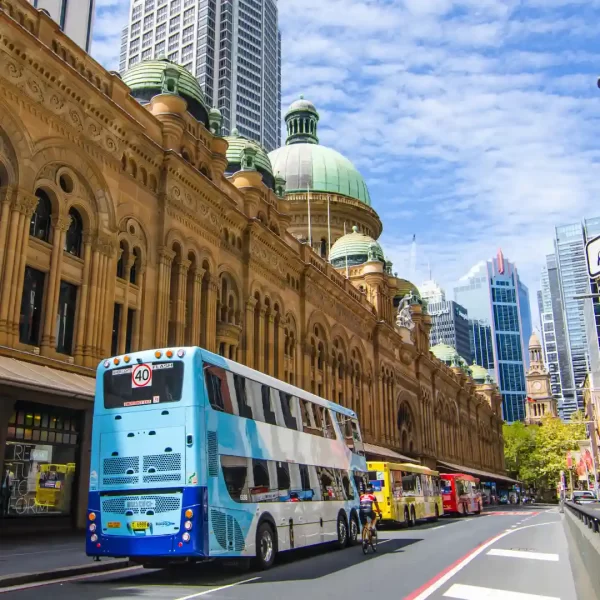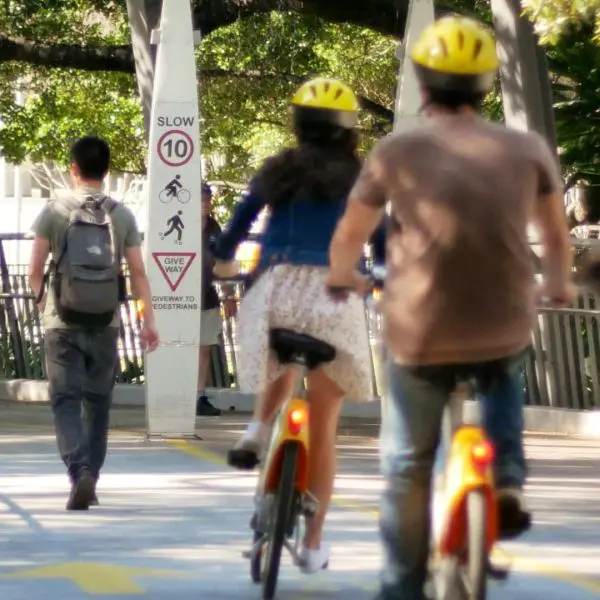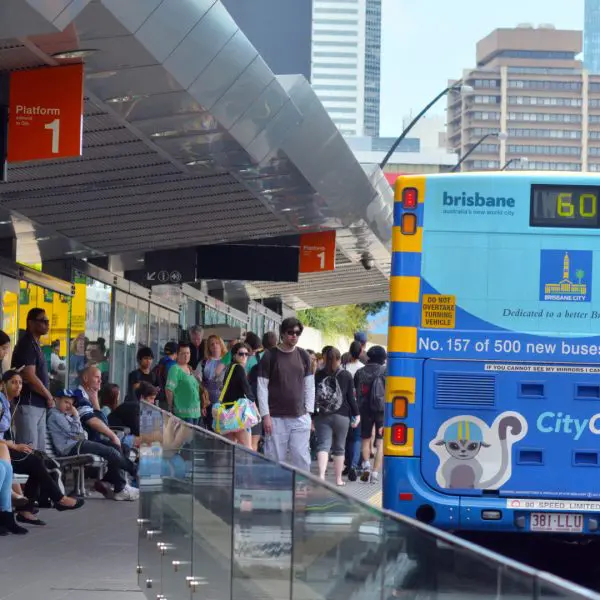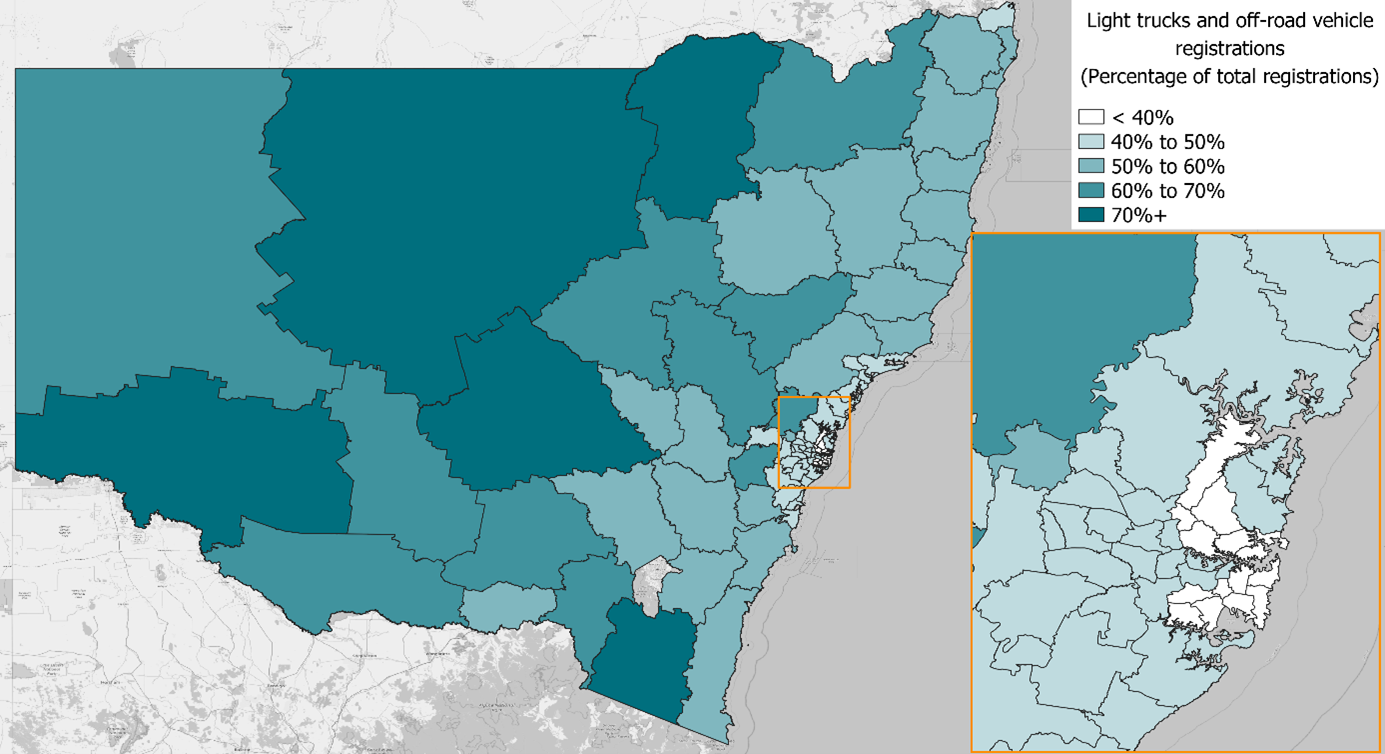
Shifting perception on electric vehicles
26 July 2021
Currently, electric vehicles (EVs) represent less than 1% of new car sales in NSW and Australia-wide. This is much lower than other OECD countries, with EVs representing 75% of sales in Norway and 11% of sales in the UK in 2020[1]. The distribution of battery-electric vehicle (BEV) sales in NSW in 2020, shown below, illustrates three key barriers to adoption that need to be overcome to enable a wider diffusion of EVs.
Share of battery electric vehicles in new cars, 2020
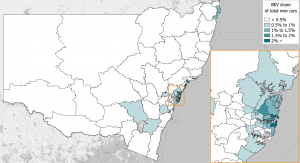
Source: ABS Motor Vehicle Census 2020
Note: New cars are defined as cars manufactured in 2019 or 2020.
EVs are too expensive for most car buyers
There is a strong overlap between EV sales and average income, showing the barrier represented by the price gap between ICEs and EVs. The highest EV shares of new cars in 2020 are achieved in two of the wealthiest areas of Sydney, the Eastern Suburbs and around Manly. In the short term, financial incentives, as currently proposed by the NSW government, could help with the price issue. In the longer term, declining prices should render EVs affordable to a larger part of the population within a few years.
Some popular vehicles are not available as EVs
Outer urban areas of Sydney, regional NSW, and industrial areas display the highest proportions of light commercial vehicle, utility vehicle and sport utility vehicle ownership (see figure below). These types of vehicles are not available as EVs, making it impossible for their owners to transition to EVs.
Financial incentives could convince more auto-makers to bring more models into Australia, and even convince automakers to deliver cheaper vehicles if there is a price cap to receive the incentive.
Proportion of new light truck and off-road vehicle, 2020
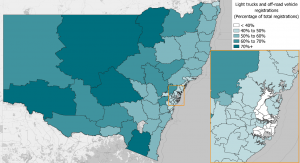
Source: Service NSW registration data
EVs suffer from an image problem in some segments of the population
BEVs are notably absent from rural areas and concentrate in the inner city. On top of an income effect, this reflects current perceptions and preferences towards EVs, which have been shown to correlate with education levels and political preferences[1].
It can be expected that, as EVs become more mainstream, perceptions will shift and EV acceptance will rise. Building adequate charging infrastructure could also help reduce range anxiety.
[1] Sovacool, B., Kester, J., Noel, L. and Zaruzua de Rubens, G. 2018, ‘The demographics of decarbonizing transport: The influence of gender, education, occupation, age, and household size on electric mobility preferences in the Nordic region’, Global Environmental Change, vol. 52, pp 86-100, viewed 16 July 2021, (link)
Sovacool, B., Kester, J., Noel, L. and Zaruzua de Rubens, G. 2019, ‘Income, political affiliation, urbanism and geography in stated preferences for electric vehicles (EVs) and vehicle-to-grid (V2G) technologies in Northern Europe’, Journal of Transport Geography, vol. 78, pp 214-229, viewed 16 July 2021, (link)
